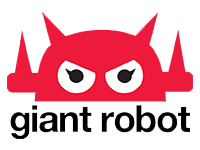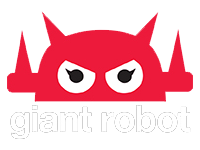Giant Robot Store and GR2 News
Case 2 is a smaller one that's near the entrance of the Giant Robot Installation at the Japanese American National Museum Biennale 4. I'll try and explain what everything is. From upper left: 1. Yoskay Yamamoto made a pewter version...
Continue reading
Art has the power to provoke ideas and inflame passions. Politics and art, in this way, go hand in hand. When an event of historical magnitude occurs, it’s only a matter of time before an artist emerges and addresses it. Prime Minister Shinzo Abe’s economic plan (Abenomics) as the story of the hour in news circles, it’s easy to forget that Japan endured a nuclear catastrophe just 2 years ago. In March 2011, the Tokyo Electric Power Company’s Fukushima Daiichi Nuclear Power Plant underwent a partial meltdown from the 3.11 Earthquake and Tsunami. Approximately 157,000 residents were forced to flee their homes due to radioactive contamination in Fukushima prefecture with little hope of ever returning. Critics blamed the disaster on negligence and incompetency concerning safety regulations willingly overlooked by TEPCO and the Japanese government. Flash-forward to today and the public carries on as if it’s business as usual. The earthquake, tsunami, or even Fukushima rarely comes up in casual conversations. On the surface, it appears that the populace and Japanese government have forgotten the disaster altogether. One artist hasn’t. The man calling himself 281_Anti Nuke designed stickers, posters, and indiscreetly plastered them throughout Tokyo. His most recognizable piece is a small girl in a slicker with “I hate rain” printed beneath. It isn’t until you glimpse a nuclear trefoil inscribed beneath the text that its message dawns on you and all the events broadcasted from yesteryear return to you in a flood of regret. His ‘mock’ propaganda is a sharp–albeit intrusive– reminder of the gravity of what happened in Fukushima not so long ago. It’s a tragedy that he claims the government created. It’s a tragedy that he believes they coerced the public to forget. Giant Robot Magazine previously reported sightings of his art in October 2011. Back then, information on 281 was scarce. Two years later, major outlets like The Economist, Financial Times, and Wall Street Journal have featured photos of his art in articles about national politics. Others like Japan Rolling Stones, Channel 24, and The Japan Times have even interviewed the enigmatic artist himself. Besides his distrust of the Japanese government and his drive to hold them accountable, almost no one knows anything about 281′s personal life–let alone his actual name. The retrospective at the Pink Cow bar in Roppongi on June 6th, 2013, was held to raise awareness of his work and offer a little more insight into the artist himself. The retrospective hosted a preview screening of filmmaker/photographer Adrian Storey’s self-titled documentary about 281. Storey formerly featured some of 281′s designs in a segment that he submitted for Ridley Scott’s Japan in a Day documentary. 281 contacted Storey and requested permission to use the images from Japan in a Day for his own personal website. Story agreed on the condition that 281 consent to be the subject of the aforementioned self-titled documentary. Filming began in January of this year. Stroey’s documentary not only depicted the platform for 281’s opposition to the corruption of Japanese politicians and nuclear industry, but...
Continue reading
Art has the power to provoke ideas and inflame passions. Politics and art, in this way, go hand in hand. When an event of historical magnitude occurs, it’s only a matter of time before an artist emerges and addresses it. Prime Minister Shinzo Abe’s economic plan (Abenomics) as the story of the hour in news circles, it’s easy to forget that Japan endured a nuclear catastrophe just 2 years ago. In March 2011, the Tokyo Electric Power Company’s Fukushima Daiichi Nuclear Power Plant underwent a partial meltdown from the 3.11 Earthquake and Tsunami. Approximately 157,000 residents were forced to flee their homes due to radioactive contamination in Fukushima prefecture with little hope of ever returning. Critics blamed the disaster on negligence and incompetency concerning safety regulations willingly overlooked by TEPCO and the Japanese government. Flash-forward to today and the public carries on as if it’s business as usual. The earthquake, tsunami, or even Fukushima rarely comes up in casual conversations. On the surface, it appears that the populace and Japanese government have forgotten the disaster altogether. One artist hasn’t. The man calling himself 281_Anti Nuke designed stickers, posters, and indiscreetly plastered them throughout Tokyo. His most recognizable piece is a small girl in a slicker with “I hate rain” printed beneath. It isn’t until you glimpse a nuclear trefoil inscribed beneath the text that its message dawns on you and all the events broadcasted from yesteryear return to you in a flood of regret. His ‘mock’ propaganda is a sharp–albeit intrusive– reminder of the gravity of what happened in Fukushima not so long ago. It’s a tragedy that he claims the government created. It’s a tragedy that he believes they coerced the public to forget. Giant Robot Magazine previously reported sightings of his art in October 2011. Back then, information on 281 was scarce. Two years later, major outlets like The Economist, Financial Times, and Wall Street Journal have featured photos of his art in articles about national politics. Others like Japan Rolling Stones, Channel 24, and The Japan Times have even interviewed the enigmatic artist himself. Besides his distrust of the Japanese government and his drive to hold them accountable, almost no one knows anything about 281′s personal life–let alone his actual name. The retrospective at the Pink Cow bar in Roppongi on June 6th, 2013, was held to raise awareness of his work and offer a little more insight into the artist himself. The retrospective hosted a preview screening of filmmaker/photographer Adrian Storey’s self-titled documentary about 281. Storey formerly featured some of 281′s designs in a segment that he submitted for Ridley Scott’s Japan in a Day documentary. 281 contacted Storey and requested permission to use the images from Japan in a Day for his own personal website. Story agreed on the condition that 281 consent to be the subject of the aforementioned self-titled documentary. Filming began in January of this year. Stroey’s documentary not only depicted the platform for 281’s opposition to the corruption of Japanese politicians and nuclear industry, but...
Continue reading
Things are heating up again in Japanese politics. The House of Councillors election for the Japanese Diet’s upper house is expected to take place in July 21, 2013. As a result, it’s J-Politics all the time in the Japanese news cycle and until then, we won’t find out whether the ruling party, LDP, will have a firmer foothold. Until then, you can get your fix of both art and politics at 281_Anti-Nuke’s exhibition at the Pink Cow bar in Roppongi, Japan.Tourists and Tokyoites may have seen 281′s work conspicuously stickered on public property throughout the city. Giant Robot did a brief entry on sighting on his designs last Fall. Since then, 281′s prominence has grown as more news outlets have reported on his work. His art stands on its own, but his agenda is a bit bit clearer now that he’s agreed to a few interviews. His position on nuclear energy is a given. Most of this is an extension of his opposition to Japanese politicians in general who he feels carelessly put the country in harms way due to poor regulation of the Fukushima Daiichi Nuclear Power Plants that underwent a meltdown after the Earthquake and Tsunami in March 11,2011. He agrees with critics who accuse the Japanese government and TEPCO of (unintentionally) ‘creating’ the nuclear disaster through their own corrupt mismanagement and incompetence. Hence why both ex-PM Yoshihiko Noda from the political ‘left’ and current PM Shinzo Abe from the ‘right’ are targets of his rage. They’re each a part of the establishment that enabled TEPCO to haphazardly play dice with the country’s future. It’s this political context thatt has led connoisseurs to deem him Japan’s ‘Banksy,’ an English graffiti artist who–like 281–operates anonymously. Most of 281′s art is still visible on the streets of Shibuya, Shinjuku, and other parts of Tokyo. However, a lot of it has either faded or been defaced, so it’s more preferable to see his art in a more preserved state at The Pink Cow. Even if political activism is beneath or beyond you, you can at least act like you know. The Pink Cow 5-5-1 Roppongi Roi Bulding B1F Minato-ku, Tokyo 106-0032 Open 5pm-Late (Closed Mon) Last food order: 10:30pm Reservations and Info: cowmail@thepinkcow.com For more information: visit www.thepinkcow.com.
Continue reading
Does anyone care these days? He’s still around and the Smithsonian Mag just figured out he exists. We kid you, but here’s just another article about him. (Smithsonian Mag – Bansky)
Continue reading



